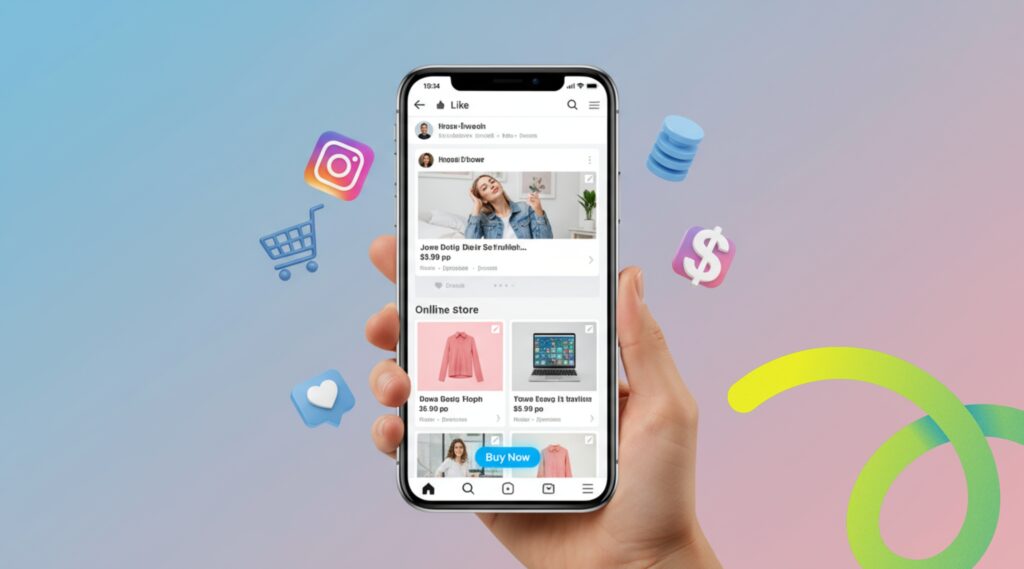
From Scroll to Sale: How Social Commerce Is Changing the Way We Shop
The digital world has always been a powerful place for retail, but something fundamental has shifted. We’ve moved from using social media as a place to find products to a place where we can buy them, all without leaving our feeds. This is the essence of social commerce, and it’s completely transforming the modern customer journey. For brands, the goal is no longer just to get a “like” or a “share,” but to convert that social buzz into tangible sales, and the key to that is building a seamless bridge from your Instagram feed directly to your e-commerce social media strategy.
Gone are the days when a brand’s social strategy was a separate entity from its sales pipeline. Today, platforms like Instagram have become sophisticated storefronts. Features like shoppable posts, product stickers, and dedicated “Shop” tabs turn a casual scroll session into a productive shopping spree. A user sees a stunning image of a new dress, taps the product tag, and is instantly taken to the product page on the brand’s website. This isn’t just about convenience; it’s about minimizing friction. Every extra click, every moment a user has to leave the app and manually search for a product, is a risk of losing a sale. Social commerce eliminates those roadblocks, creating a direct path from discovery to conversion.
The power of social commerce lies in its ability to meet customers where they already are. We spend hours a day on social media, so it’s only natural that a significant portion of our shopping behavior would migrate there. But it’s not just about convenience; it’s about authenticity. We trust the recommendations of our favorite influencers and the brands we follow. When we see a product being used and loved in a real-world context—be it an unboxing video, a styling tutorial, or a simple photo—it feels more genuine and compelling than a static product image on a website. This visual, story-driven approach builds a deeper connection with the consumer, nurturing a desire that can be instantly acted upon.
However, the ultimate goal for most brands isn’t to rely solely on in-app purchases. While they’re a great starting point, the real win is using social media to drive high-intent traffic back to a brand’s own e-commerce website. Why? Because your website is your brand’s home. It’s where you can tell your complete story, control the customer experience, gather valuable data, and, most importantly, build long-term relationships through email marketing and loyalty programs.
Consider the user who sees a post about a new collection on Instagram. They tap the product tag, which takes them to the product page on your website. Once there, they’re not just looking at one item. They can explore related products, read customer reviews, check out sizing guides, and even sign up for your newsletter. This journey from a fleeting moment of social engagement to a deep dive on your website is where the magic happens. It’s a funnel that turns a curious scroller into a loyal customer.
To master this transition, brands must create a seamless and cohesive experience. This means ensuring that your product listings on Instagram are always up-to-date, with accurate pricing and inventory. It means your website must be mobile-optimized and lightning-fast to prevent a shopper from getting frustrated and abandoning their cart. It also involves using data analytics to understand which social posts are driving the most traffic and conversions, allowing you to fine-tune your e-commerce social media strategy for maximum impact.
The most successful brands are those that see their social media channels not just as marketing tools, but as an integral part of their sales ecosystem. They use compelling content to capture attention, leverage social shopping features to reduce friction, and, crucially, design a path that leads the customer from that initial social tap to a rich, rewarding experience on their owned website. The era of social commerce is here, and it’s a testament to how the modern shopper expects a shopping experience that is as fluid and interconnected as their daily digital life. The future of retail isn’t just about selling; it’s about connecting, engaging, and turning a simple scroll into a significant sale.

